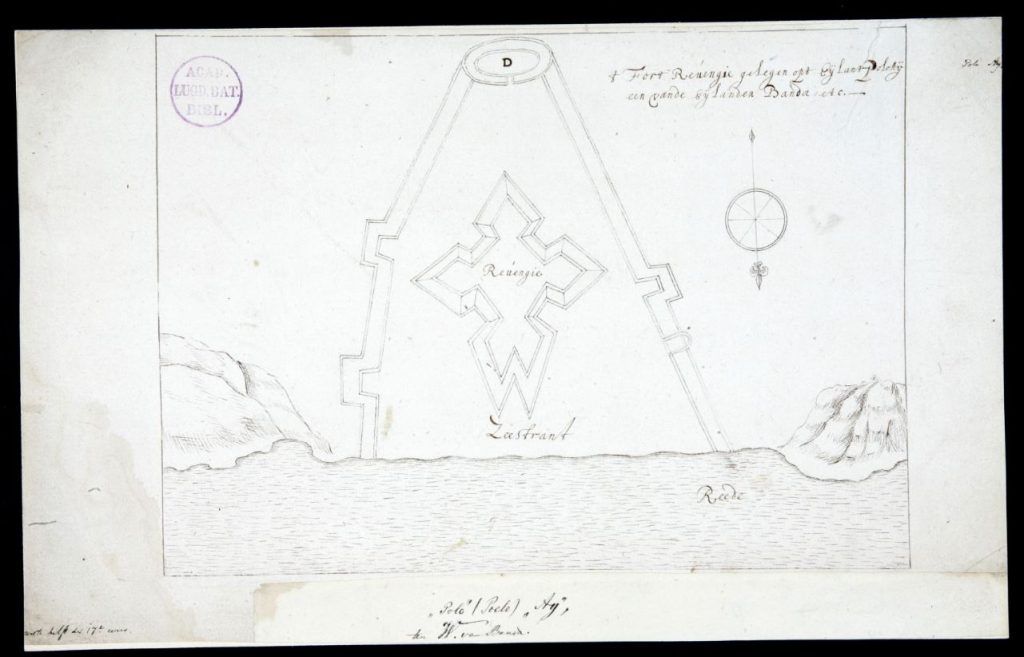
Pada bulan Mei 1615 armada kecil VOC di bawah komando Adriaan van der Dussen dan Pieter van den Broecke mengunjungi pulau Ay. Pulau sumber pala ini diduduki tanpa mengalami kerugian. Namun, beberapa hari kemudian, penduduk setempat memutuskan untuk melawan penjajah dan VOC harus mundur dari pulau tersebut, karena mengalami kerugian besar. Pada bulan April 1616 Van der Dussen kembali dan pulau itu diduduki kembali. Penduduk harus menyerahkan diri kepada VOC. Mereka yang menolak dipaksa keluar dari benteng mereka di utara ke tebing tinggi di mana banyak orang yang melompat hingga tewas di laut di bawahnya. Di atas reruntuhan benteng setempat, VOC akan membangun benteng baru: Revengie (balas dendam), benteng segi lima dengan lima bastion sudut. Meskipun Heren XVII memprotes pembangunan benteng lain di Maluku, Dewan Hindia dengan tenang mengabaikan protes ini dan benteng tersebut selesai dibangun. Pada tahun 1683 benteng ini rusak berat akibat gempa bumi, namun dibangun kembali. Pada abad kedelapan belas, benteng ini digunakan sebagai penjara bagi pejabat tinggi perusahaan dan tahanan berpangkat tinggi lainnya. Bangunan ini dipulihkan kembali pada tahun 1753 dan tetap digunakan hingga akhir abad kedelapan belas. Ciri khas benteng ini adalah banyaknya tangki air hujan yang dibangun di dinding tirai dan di bawah terreplein. Benteng ini memiliki persediaan air bersih yang baik karena sistem penyaringan dan tangkapan yang canggih.
In English:
In May 1615 a small VOC-fleet under command of Adriaan van der Dussen and Pieter van den Broecke visited the island of Ay. The island, a source of nutmeg, was occupied without losses. A few days later, however, the local population decided to resist the invaders and the VOC had to withdraw from the island, having incurred heavy losses. In April 1616 Van der Dussen returned and the island was occupied again. The population had to submit themselves to the VOC. Those who refused were forced from their stronghold in the north onto a high cliff where many jumped to their death in the sea below. On the ruins of the local fort the VOC would construct a new fortification : Revengie (revenge), a pentagonal fort with five corner bastions. Though the Heren XVII protested the construction of yet another fort in the Moluccas, the Council of the Indies calmly ignored this protest and the fort was completed. In 1683 the fort was heavily damaged by an earthquake, but restored. In the eighteenth century, the fort was used as a prison for high company officials and other prisoners of high rank. It was again restored in 1753 and would remain in use until the end of the eighteenth century. A notable feature of the fort are many rain-water cisterns built in the curtain wall and underneath the terreplein. The fort had a good fresh water supply due to the sophisticated filtration and catchment system.




